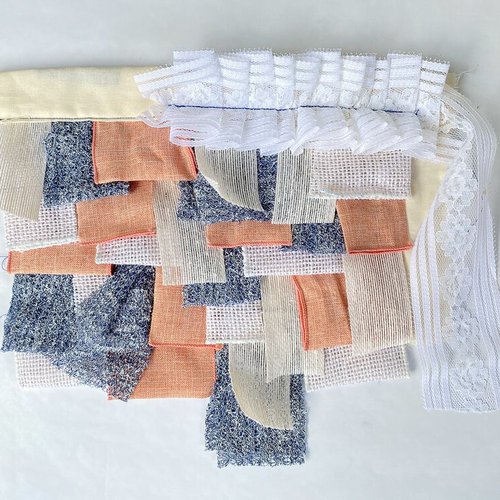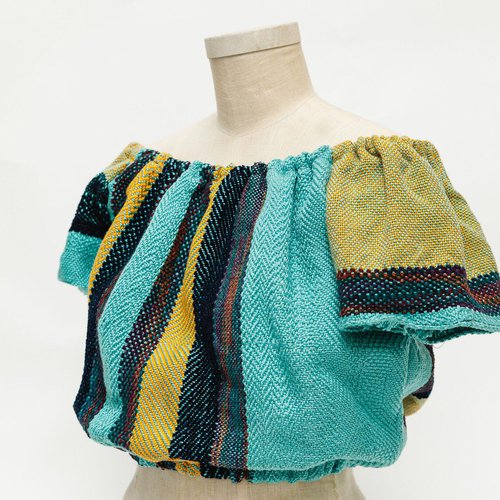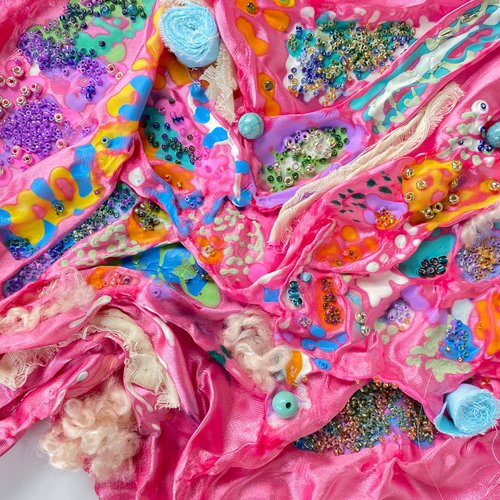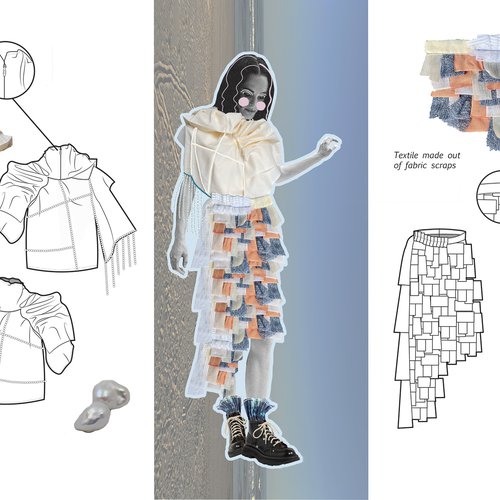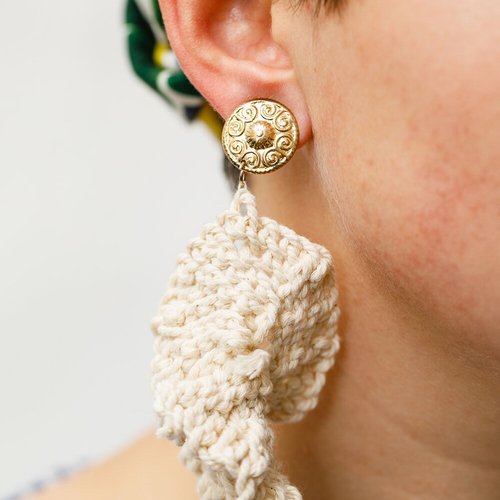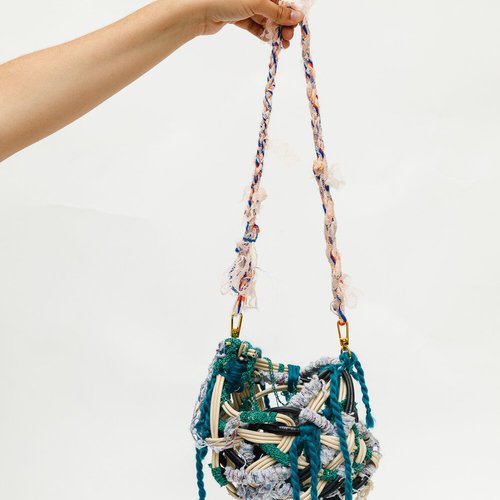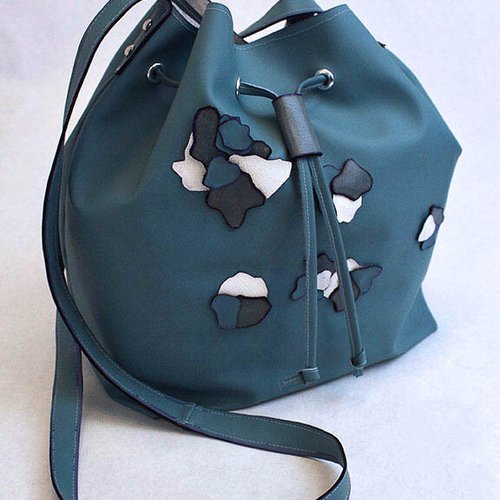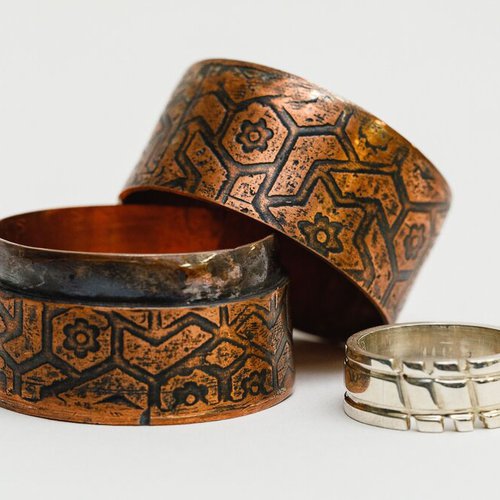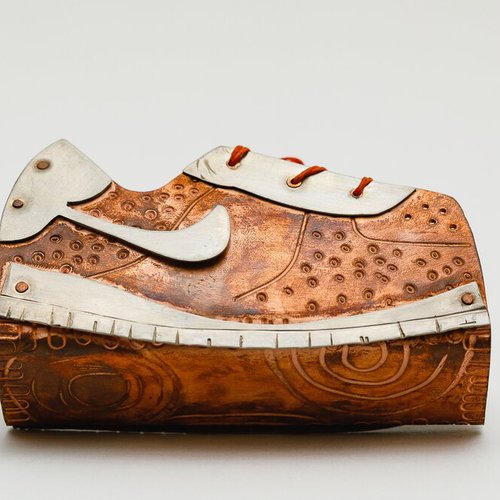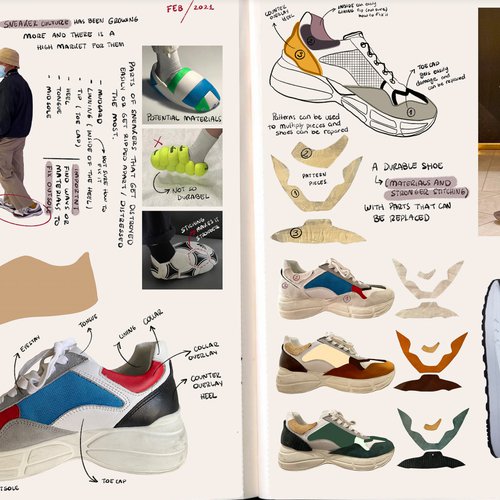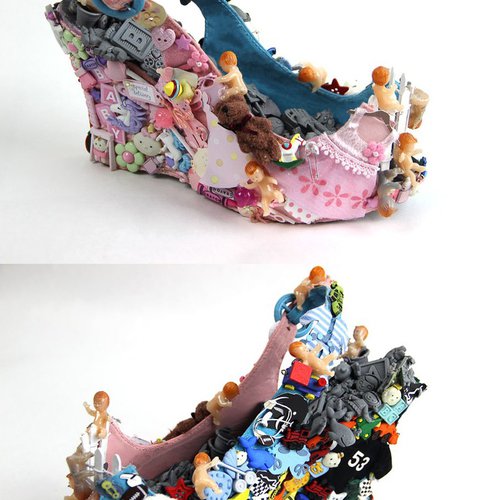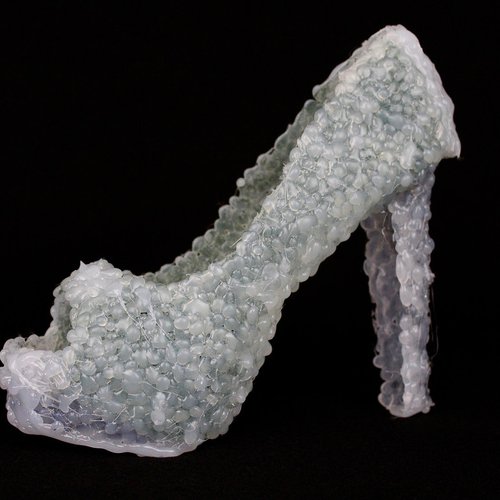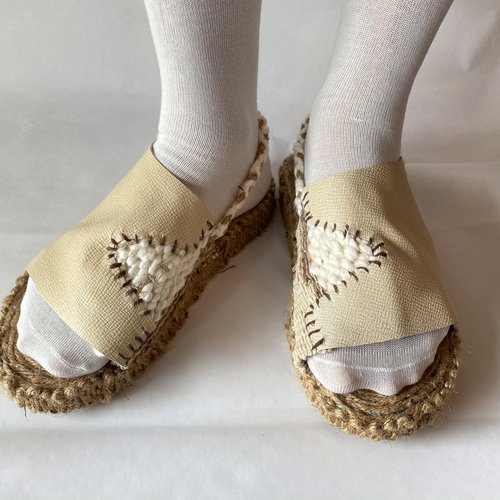The hidden journey of Melissa Rodriguez
From Colombia, to California, to a fashion design course that helped her find a new definition of home.

Melissa Rodriguez, second from right, in a CCA class dying textiles.
Her junior year at California College of the Arts, student Melissa Rodriguez (BFA Individualized Studies 2022) enrolled in Fashion Design 3, a course that concludes with every student creating a fashion collection.
It was fall 2020, and she’d been living with her family in Houston since March due to the COVID-19 campus closures. She’d left a lot behind in San Francisco—her friends, her studios, her materials, and a brand new internship as a design assistant with sustainable fashion brand Amour Vert.
The heartache of a quick exit was all too familiar for Rodriguez.

Rodriguez always loved fashion, and as a kid she once cut her own hair to try to make a fur coat.
Cali to Miami
Years prior, when she was a high school student in Cali, Colombia, Rodriguez came home and her mom told her to pack a bag. They needed to leave. Fast. “I can’t! I have an English test tomorrow!” Rodriguez remembers saying. “I couldn’t comprehend leaving Colombia. I basically put as much as I could in a piece of luggage. The next day we were out of there.”
Rodriguez was now a refugee living in Miami, dazed at the rapid change and loss of her home; her beloved dog Rocko left behind in Cali with her grandmother.
“I fell into a very terrible depression. I didn't know who I was. It was just completely different. It was so traumatic, to be honest, that sudden change,” she says. “I stopped studying for a year, just between everything that was going on, and when I entered high school again, I decided I was going to try to find myself again and pull myself back together. Art was a huge help in doing that.”

Rocko, the very good bulldog.
She dug into coursework for her AP Art class. Her parents surprised her by getting her beloved Rocko to Miami for her 18th birthday. She adjusted as best she could. But she never really talked about having to leave and stay away from everything she once knew.
“It was always this thing I didn’t want to talk about. Being a minority in America is really hard,” Rodriguez says. “My parents always told me to keep things quiet because they didn’t want people to single me out as a refugee or immigrant. They said to try not to speak Spanish so kids wouldn’t bully me. I know that they were trying to protect me, but I felt like I was hiding myself and hiding my story. And even though Miami is a pretty diverse place to be, and there is a big Hispanic culture, I did experience some terrible things. People would ask me, ‘Oh, do you have drugs? Because you’re from Colombia. Like, do you have it in your bag?’ There’s so much more to Colombia than what people think.”
She was about to prove there was so much more to her, too.

A display of Rodriguez’s work on the CCA campus.
Miami to CCA
Rodriguez knew she wanted to study fashion design in college. She was the kind of kid who once cut her own hair to try to design a fur coat for herself. “My parents were so mad at me because I gave myself such a terrible haircut!” she says, laughing. “But yes, art was always something I was interested in and fashion as well, especially shoes. I would go in my mom’s closet and just stare at her shoes.”
At Miami Arts Charter School, she found a fashion mentor in Jennifer Kenney, who helped her adapt to her new school (Rodriguez still shares her projects with Kenney, who offers advice and support) and her art teacher Raul Perdomo helped her fill out her CCA college application. For the portfolio portion of the application, she decided to research and create a shoe collection in which each shoe was tied to some aspect of mental health, a process that, “looking back at it,” she says, “maybe was a way to learn more about what I was feeling and just trying to process things.”
CCA—moved by Rodriguez’s portfolio, deep research, and meaningful concept—offered her a scholarship and financial aid package that covered her full cost of tuition. But she almost didn’t take it.

Sustainable boot design board by Melissa Rodriguez.
“I always thought I’d end up in New York,” she says. “But then I visited and completely fell in love with CCA. I loved that there was not only fashion that I was going to be able to pursue, but many programs. I liked the freedom that CCA has to explore different forms.”
Explore, she did. She dove right in, working in the campus Soft Lab, joining student council and the campus activities board, and becoming an orientation leader to welcome new students to the college. Faculty began to notice her drive and talent.

Sustainable boot design by Melissa Rodriguez.
“Melissa is one of the most consistently committed, hard-working, and passionate students I’ve had the honor of working with,” says Assistant Professor Ghazaleh Khalifeh. “She exudes a special kind of creative charisma and the kind of sincere curiosity and vibrant desire to learn new things and evolve as an artist and designer who not only makes what she envisions, but who also tells a special story through doing so.”
Khalifeh recalls Rodriguez showing up one day to a Fashion Design 2 class with a handful of free tubing for bicycle tires that she’d come across in the Nave (the CCA San Francisco campus’s main building corridor). She planned to recycle them into textiles for a collection inspired by early punk movements.

Rodriquez used fiber waste she’d saved up from old projects to develop her experimental textiles.
Sustainability and environmental justice continued to rise to the top of Rodriguez’s design interests. She made the transition from the Fashion Design program to the Individualized Studies program so she could further merge her interest in multidisciplinary materials, and added an Ecological Practices minor. She began to follow movements like Fashion Revolution, Pay Up Campaign, and Slow Factory so she could learn as much about sustainable fashion production as possible.
“Right now, both the fashion industry and the shoe industry are not very environmentally friendly. That’s something that I definitely want to bring to the table with my work,” Rodriguez says. “And it’s not only about taking care of our natural resources, but also taking care of garment workers. Organic cotton is better to be used because it’s more sustainable for the environment, but what are the working conditions for the farmers?”

Rodriguez’s home classroom and studio during the COVID-19 pandemic.
This blooming consciousness for environmental justice began to influence every project she worked on. When one of her class projects challenged her to create new textiles that design into the natural qualities of cotton fabrics, Rodriquez used fiber waste she’d saved up from old projects to develop her experimental textiles.
“If I were to buy new ones or focus my project on new cotton fabrics, I would be taking from the environment, but I have all of this right here,” she says. “We have to honor that the environment already gave us those resources to produce those textiles and we need to honor those materials. They’re still useful and they’re beautiful. We just have to find innovative ways to use them. As a society, we consume so many things, all the time, that it won’t be possible to sustain. I like thinking about the hidden history of materials.”
Rodriguez’s work on the project won a $1,500 sustainability-based fashion grant from the Cotton Incorporated Awards in 2020.
“Melissa is a very talented, dedicated young designer,” says Fashion Design Chair Lynda Grose. “She actively seeks out cross-discipline experiences at CCA. She conducts deep research and fully commits to bringing her concepts through development and into final expression. Melissa’s concept of ‘taking care’ of the cotton we have already produced captured the resources required to grow virgin fiber and the enormous waste generated by conspicuous production. It bridged science and the arts, technical and social and cultural considerations, which we foster at CCA. We hold sustainability as a central tenet, exposing students to scientists, farmers, ranchers, activists—as well as creatives in the classroom and through field trips and farm tours. This experiential learning combined with meeting entrepreneurs and CCA alumni who are working professionally to develop new fashion experiences, creates agency.”

Source imagery for Rodriguez’s collection The Hidden Journey of a Immigrant Girl.
CCA to family
“Internally, I was finding different ways to express what I was dealing with because, none of my friends knew, none of my professors knew,” she says. Rodriguez, it turns out, had remained mostly silent about her life before college.
Then, in the fall 2020 semester, she took the Fashion Design 3 course, and it was time to create that end-of-semester collection.
“We could do whatever we wanted, and I felt like I was ready to process it all through my practice,” she says, adding that she started by trying to do research. “I didn’t have any photos of me. All the photo albums were at home in Colombia. So I asked my grandma, and she took photos of the photos of when I was a baby and with my family. Just having all this memory back, it was amazing.”

To create visuals for her collection The Hidden Journey of an Immigrant Girl, Rodriguez used copies of her immigration paperwork to fill in her now-missing silhouette in the photographs.
Amazing . . . and incredibly difficult.
“I felt like my memories were kind of destroyed a little bit,” she says, “and it was like there was a blue tint all over my memories because it was no longer just ‘growing up happy memories’ that I had. It was more about the pain of not being home. Those memories were no longer the same.”
Discouraged and feeling stuck, Rodriguez asked her professor what to do. He suggested just writing down whatever was on her mind about the work. “I started crying when I read what I wrote,” she says. “It was trying to get it out. I knew what I was going to do. I was finally ready to embrace my culture and embrace who I was.”
As part of her collection The Hidden Journey of an Immigrant Girl, Rodriguez created a poem and process video tinted blue, she writes, as her “once-loved memories now feel.”
She titled her collection The Hidden Journey of an Immigrant Girl, taking inspiration from Colombian traditional wear and creating textiles out of multiple little pieces of fabric. “I was stitching myself up again,” Rodriguez says. “Finding myself.”
She took the photos-of-photos of her and her family and cut herself out of them; then she used copies of her immigration paperwork to fill in her now-missing silhouette. “I felt like using the immigration paperwork was such an important thing through my process,” she says. “When immigrating here, I felt like I wasn’t myself, but more like a stack of papers and just numbers. A lawyer in immigration services doesn’t even call you a person, they call you an alien. That was terrible—is terrible for immigrants—because there’s just so much pain behind our stories.”
Finally, she made a process video, tinted in a mournful blue and narrated with the powerful writing that sparked the collection idea.

Melissa Rodriguez, The Hidden Journey of an Immigrant Girl, 2020.
“Because of COVID, I was working on the collection while at home with my family, and I think that was really special,” Rodriguez says. “I have a little sister, we’re six years apart, and she’s my best friend in the world. It helped to have her next to me as I created the collection. We began to talk about things we never told each other, even though we’re so close. Digging up all this stuff helped us to talk very openly to each other and understand what we went through. She was surprised about things, and me too. We were always strong, but I would say even stronger now.”
Her portfolio got stronger too: The Hidden Journey of an Immigrant Girl was chosen to participate in the Council of Fashion Designers of America student collection competition (though she later had to decline for personal reasons).
“The collection made my relationship with art and design even stronger because it made me realize that I can use my personal experiences, and by telling my story, I can also help others,” Rodriguez says. “I know that there’s probably a lot of people like me that are either ashamed or scared to share their experiences. And I hope that after seeing that I was able to, they can see that there’s more people that also go through this. They’re not alone.”
Family to fashion
“It’s a powerful and beautiful honor to witness and feel the energy of how deeply Melissa cares about all she sets her mind to, and to see her accomplish her goals through a consistently solid work ethic,” Khalifeh says. “The sky truly is the limit for Melissa’s future and potential to truly reach extraordinary heights, while also going just as deep to deliver meaning and positive purpose through her impact.”
So what does she want to do next? Though now an Individualized Studies major, Rodriguez says she’s happy to get to do a Fashion Design senior thesis collection, which she plans to use as an opportunity to melt metal scraps and repurpose as much material as possible into designing a shoe collection.
“I love that shoes are a way of transportation without being a way of transportation,” Rodriguez says, pausing to consider her next thought in answer to what she wishes others know about students with experiences like hers. “People should be empathetic, because it’s not easy to be here as an immigrant and to construct everything that you construct in a new place, where you don’t speak the language and you don’t know anyone—and somehow you’re making it. Everyone has their hidden journey.”
— Jackie Mantey
April 29, 2021
